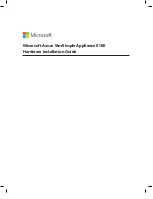
Table 25: Device Priority Value and Extended System ID
Extended System ID (Set Equal to the VLAN ID)
Priority Value
Bit
1
Bit
2
Bit
3
Bit
4
Bit
5
Bit
6
Bit
7
Bit
8
Bit
9
Bit 10
Bit 11
Bit 12
Bit 13
Bit 14
Bit 15
Bit 16
1
2
4
8
16
32
64
128
256
512
1024
2048
4096
8192
16384
32768
Spanning tree uses the extended system ID, the switch priority, and the allocated spanning-tree MAC address
to make the bridge ID unique for each VLAN. Because the switch stack appears as a single switch to the rest
of the network, all switches in the stack use the same bridge ID for a given spanning tree. If the stack master
fails, the stack members recalculate their bridge IDs of all running spanning trees based on the new MAC
address of the new stack master.
Support for the extended system ID affects how you manually configure the root switch, the secondary root
switch, and the switch priority of a VLAN. For example, when you change the switch priority value, you
change the probability that the switch will be elected as the root switch. Configuring a higher value decreases
the probability; a lower value increases the probability.
If any root switch for the specified VLAN has a switch priority lower than 24576, the switch sets its own
priority for the specified VLAN to 4096 less than the lowest switch priority. 4096 is the value of the
least-significant bit of a 4-bit switch priority value as shown in the table.
Related Topics
Configuring the Root Switch , on page 227
Restrictions for STP, on page 211
Configuring the Root Switch , on page 264
Root Switch, on page 244
Specifying the MST Region Configuration and Enabling MSTP , on page 261
Port Priority Versus Path Cost
If a loop occurs, spanning tree uses port priority when selecting an interface to put into the forwarding state.
You can assign higher priority values (lower numerical values) to interfaces that you want selected first and
lower priority values (higher numerical values) that you want selected last. If all interfaces have the same
priority value, spanning tree puts the interface with the lowest interface number in the forwarding state and
blocks the other interfaces.
The spanning-tree path cost default value is derived from the media speed of an interface. If a loop occurs,
spanning tree uses cost when selecting an interface to put in the forwarding state. You can assign lower cost
values to interfaces that you want selected first and higher cost values that you want selected last. If all
interfaces have the same cost value, spanning tree puts the interface with the lowest interface number in the
forwarding state and blocks the other interfaces.
If your switch is a member of a switch stack, you must assign lower cost values to interfaces that you want
selected first and higher cost values that you want selected last instead of adjusting its port priority. For details,
see Related Topics.
Related Topics
Configuring Port Priority , on page 230
Consolidated Platform Configuration Guide, Cisco IOS Release 15.2(4)E (Catalyst 2960-X Switches)
215
Information About Spanning Tree Protocol
Summary of Contents for Catalyst 2960 Series
Page 96: ......
Page 196: ......
Page 250: ......
Page 292: ......
Page 488: ......
Page 589: ...P A R T VI Cisco Flexible NetFlow Configuring NetFlow Lite page 509 ...
Page 590: ......
Page 619: ...P A R T VII QoS Configuring QoS page 539 Configuring Auto QoS page 645 ...
Page 620: ......
Page 750: ......
Page 1604: ......
Page 1740: ......
Page 2105: ...P A R T XII Configuring Cisco IOS IP SLAs Configuring Cisco IP SLAs page 2025 ...
Page 2106: ......
Page 2118: ......
Page 2164: ......
















































